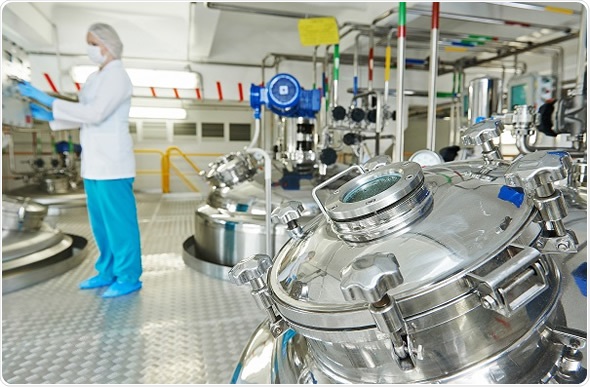In this interview, Chuck DeCarlo from Extrel provides advice on bioreactor monitoring using mass spectrometry and gives an introduction to the MAX300-BIO bioreactor gas analyzer.
What are the main parameters that need to be monitored for efficient bioreactor control?
The manufacturer needs to ensure that the organism in the vessel is viable and actively producing the correct product. Dynamic models are built defining the ideal production conditions. If an undesirable change is detected, the plant has to be able to adjust quickly.
Typically, physical properties of the broth, like temperature and pH, are monitored along with the composition of the reactor off-gas.
How powerful is mass spectrometry as a tool for bioreactor monitoring?
The mass spectrometer is a gas analyser capable of measuring every component in the bioreactor off-gas. This tells the control system if the bioreactor is operating at peak efficiency, or if changes need to be made to the operating conditions within the vessel.
The high precision of the mass spectrometers measurements ensures that critical control parameters, like respiratory quotient (RQ), can be calculated with the highest precision possible, and without the need to integrate and maintain multiple analysers or flow meters.

What insight can be gained from composition analysis of the gases produced by the organism?
Changes to the off-gas indicate what the organism is doing. Increases in carbon dioxide can show that the population is growing. The ratio of carbon dioxide released to oxygen consumed, called the respiratory quotient, can indicate what fuel source the organism is metabolizing, and therefore, what metabolites they are producing.
In addition, liquid products with some volatility, like ethanol, can be measured right along with the oxygen and carbon dioxide. From the vapor concentration, the site can calculate the liquid concentration in the vessel, in real-time.
Why is online off-gas analysis important?
(300)-2038.jpg) An online, real-time update provides immediate notice if conditions inside the vessel start to drift away from optimum, and faster detection enables faster correction. This means that the bioreactor can be controlled with better efficiency. The endpoint of a batch can be detected faster. It means more product in less time, and better use of equipment and resources.
An online, real-time update provides immediate notice if conditions inside the vessel start to drift away from optimum, and faster detection enables faster correction. This means that the bioreactor can be controlled with better efficiency. The endpoint of a batch can be detected faster. It means more product in less time, and better use of equipment and resources.
Also, by sampling the effluent of the reactor, the MAX300-BIO is able to make it's measurements without any physical interaction with the broth. This means that there is no risk of contamination to the vessel.
Can you please give an overview of the MAX300-BIO?
The MAX300-BIO is bioreactor gas analyser. It is a single quadrupole mass spectrometer that is designed for the 24/7 online measurement of bioreactor off-gas.
With one analyser, a manufacturing facility can control 80 or more bioreactors. It delivers fast, high precision measurements of oxygen, carbon dioxide, nitrogen, argon, ethanol, and more, and has the sensitivity necessary to detect trace contamination.
How accurate is the MAX300-BIO and how does it compare to other bioreactor gas analyzers on the market?
The MAX300-BIO is both highly accurate and precise. It can measure all components of bioreactor off gas from the ppm level up to 100%, typically with precision better than 0.25% relative.
Quadrupole mass spectrometry is one of the most sensitive and flexible gas analysis techniques on the market. Unlike other bioreactor gas strategies, it can provide the measurement of all components and calculated control parameters, like the RQ, without the need to maintain, calibrate, and integrate multiple analysers.
What are the benefits of fast data?
Bioreactor control is an efficiency measurement. Fast data enables the control system to tightly control the bioreactor and maintain optimum production conditions. The MAX300 has the speed necessary to perform these measurements for all reactors at the facility; there's no need to maintain a separate set of analysers for each one.
In quantitative scanning mode, the system measures one component every 0.4 seconds, so the full update only takes 2-3 seconds. If we include a clearing delay for switching between bioreactors, we can scan one vessel every 10-20 seconds.
How many reactors can the MAX300-BIO provide real-time process data on within a facility?
The number is really unlimited. We have multiport valve configurations for 16, 31, 40, or 80 ports. The 80 port Extrel FastValve has even been installed in series to produce a system with 160 ports. It all comes down to what the user needs.
What do you think the future holds for bioreactor gas analysis? How does Extrel plan to add to this?
Advances in the use of bioreactors have led to innovations that were never possible before. The use of these techniques will continue to increase as researches identify new applications. At the same time, just as in other industries, manufacturers continue to place greater emphasis on process automation technologies, and the benefits are clear. The MAX300-BIO provides the real time, online data necessary to control the bioreactor process with peak efficiency.
Where can readers find more information?
The website is a great place to start: https://extrel.com/ and direct requests can be sent to [email protected].
About Chuck DeCarlo
 Chuck De Carlo has been the Industrial Product Manager at Extrel since January 2011, managing the MAX300 product line of process control and laboratory-benchtop quadrupole mass spectrometers.
Chuck De Carlo has been the Industrial Product Manager at Extrel since January 2011, managing the MAX300 product line of process control and laboratory-benchtop quadrupole mass spectrometers.
With thousands of industrial systems installed worldwide, he has worked closely with customers in the pharmaceutical, environmental, refining, petrochemical, semiconductor, and food and beverage industries.
Having joined Extrel as an applications chemist in 2008, Mr. DeCarlo has continued to engage Extrel's core expertise in cutting-edge technology and application development, and customer support to expand the installation base of the MAX300 in new industrial and laboratory gas analysis applications at sites throughout the world.